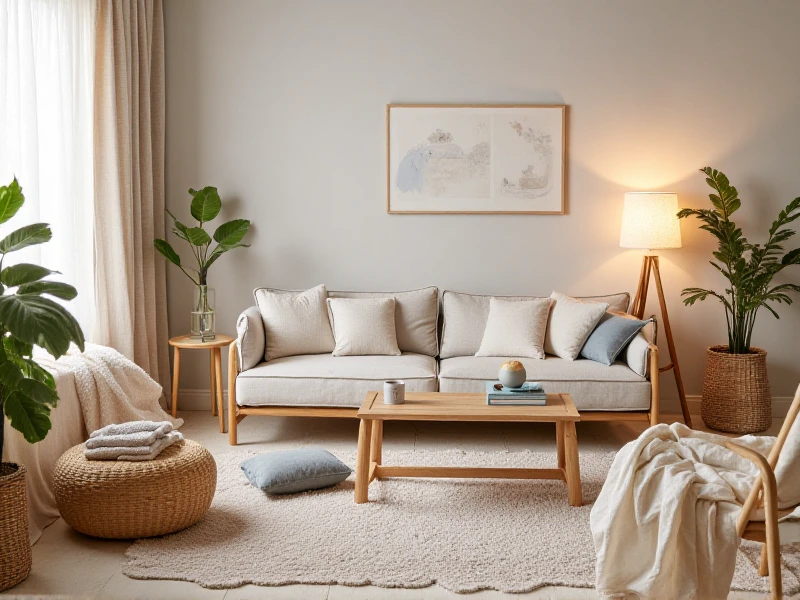The Ultimate Guide to Choosing Safe, Fun, and Kid-Friendly Furniture
2025-06-05

As a parent, you know that children's spaces should be more than just rooms—they're hubs of imagination, learning, and growth. That's why selecting the right children's furniture isn't just about matching the décor; it's about nurturing your child's development while ensuring they're surrounded by safety and creativity. In this guide, I'll take you through the essentials of picking kids' furniture that lasts, delights, and adapts as your little ones grow up. We'll cover critical safety tips, top material choices, trendy designs, and the practical aspects that every family should consider. By the end, you'll be equipped to transform any corner of the home into a haven that sparks joy for years to come.
First off, safety comes front and center in children's furniture. After years of reviewing products, I've seen how crucial it is to prioritize certifications like ASTM International standards. These ensure items like bunk beds or desks meet rigorous anti-tip and stability requirements. For instance, avoid any item with sharp edges or small parts that could become choking hazards. As kids love climbing and exploring, look for designs with rounded corners and enclosed hardware—simple steps that prevent accidents and provide peace of mind. I also recommend choosing pieces with non-toxic finishes; many families opt for eco-friendly paints that emit low VOCs to protect indoor air quality. When my toddler started toddling, I appreciated drawers with soft-close mechanisms—it minimized pinched fingers while teaching responsibility.
Beyond safety, the materials used in children's furniture play a huge role in durability and health. Solid wood options, such as birch or oak, are classics for good reason; they withstand daily adventures and can even handle the inevitable juice spills. If you're eco-conscious, bamboo pieces are a stellar alternative—they're sustainable and lightweight, making them perfect for playrooms that get rearranged often. Synthetic materials like durable plastics work well for outdoor sets or colorful chairs that resist fading. One tip from my own experience: invest in washable fabrics for upholstered items. My kids' bean bags see weekly wipe-downs and still look fresh years later.
Now, let's dive into the types of furniture that should top your list. Starting with beds, convertible options are game-changers. A sturdy toddler bed that transitions into a full-sized model as your child grows saves money and hassle—it’s a must for long-term planning. Desks and chairs for studying should prioritize ergonomics; adjustable heights help maintain good posture during craft sessions or storytime. Storage solutions? Genius designs include modular shelves disguised as animal shapes, which keep toys tidy while adding whimsy to the space. For smaller spaces, I've found multi-purpose pieces work wonders. A daybed with hidden drawers doubles as seating for sleepovers, freeing up room for play.
Current trends in children's furniture emphasize personalization and fun. Gone are the days of generic bunk bedding; now, we're seeing themes based on nature, space, or beloved characters to ignite young minds. Some brands even offer custom paint kits, so kids can collaborate on decorating—a fantastic way to boost creativity and ownership. Sustainability is huge too, with reclaimed wood tables becoming popular, and modular kits that encourage imaginative setups. The best part? These pieces often grow with the child. A colorful stool stack might start as a learning tower for toddlers and evolve into a play kitchen center by age 6.
When shopping, practical decisions matter. Set a realistic budget first—high-quality children's furniture doesn't have to break the bank. Look for sales at family-focused retailers or check secondhand markets for lightly-used gems. Assembly factors are key; choose items that arrive pre-assembled or with clear instructions to avoid frustration. Finally, test durability at home: sturdy joints and reinforced legs handle roughhousing better than flimsier models. I advise involving kids in the process, like letting them pick a fun chair design. It fosters excitement and care.
In sum, choosing children's furniture is about striking a balance—fun meets practicality, while safety and adaptability lead the way. As your youngster moves from playtime adventures to school projects, versatile pieces create environments that inspire confidence and learning. Why not start with a small upgrade today? Swap out that old seat for an ergonomic desk chair that adjusts, and watch how it transforms your child's daily routine. I've seen countless smiles bloom in spaces designed just for them. Got a favorite piece in your home? Share your stories or questions in the comments—let’s build a community of smart, safe, and joyful living for our kids! (Approximately 780 words)
Category: